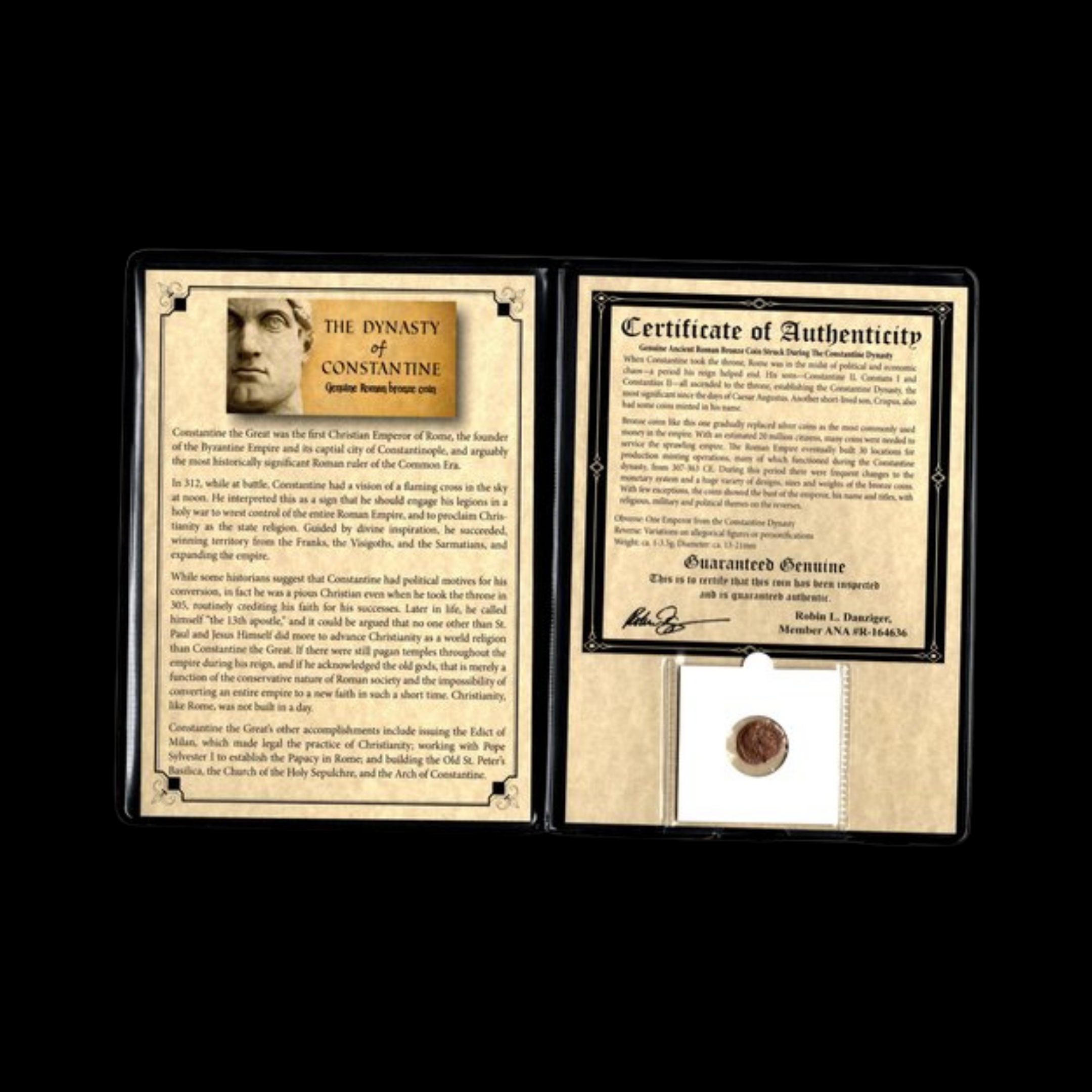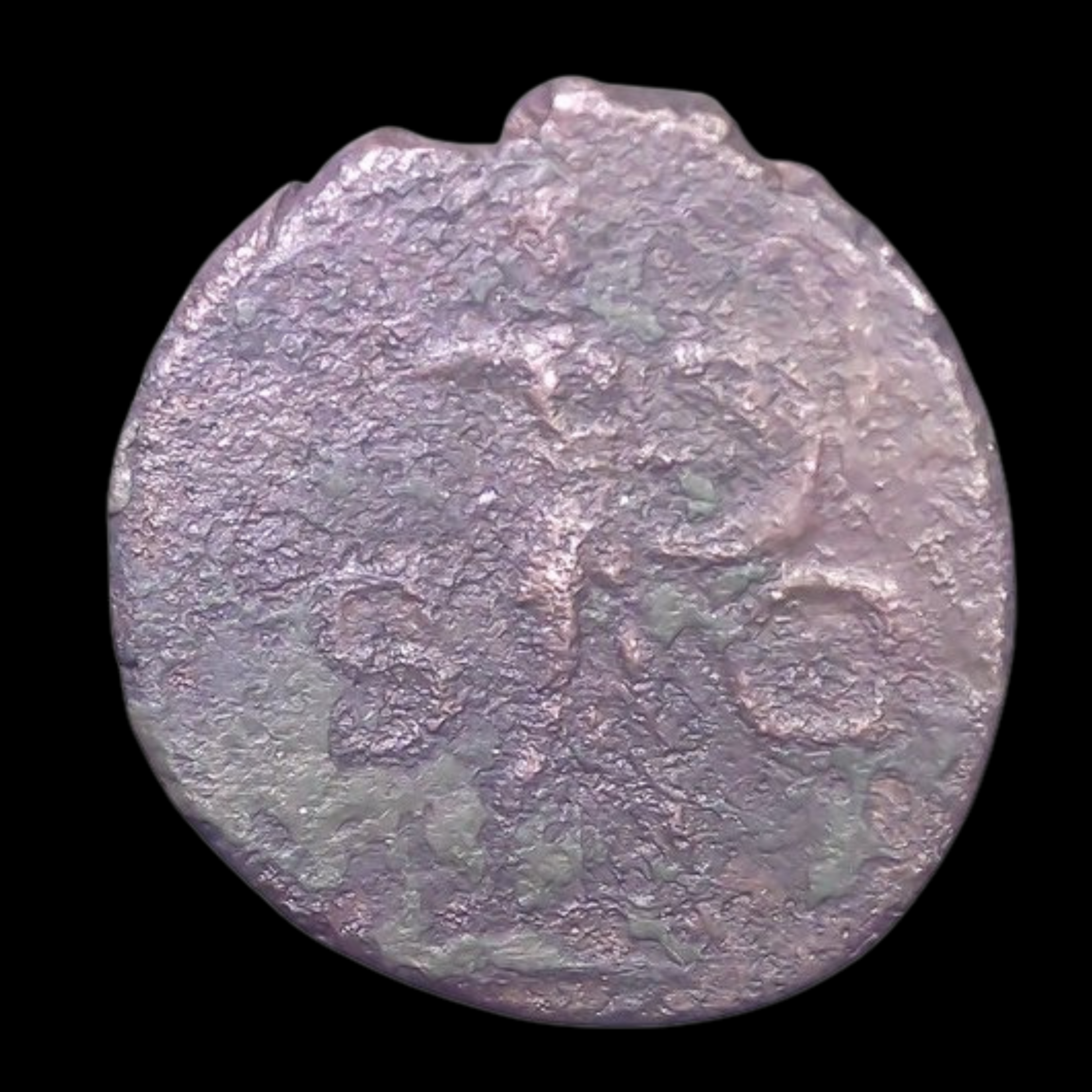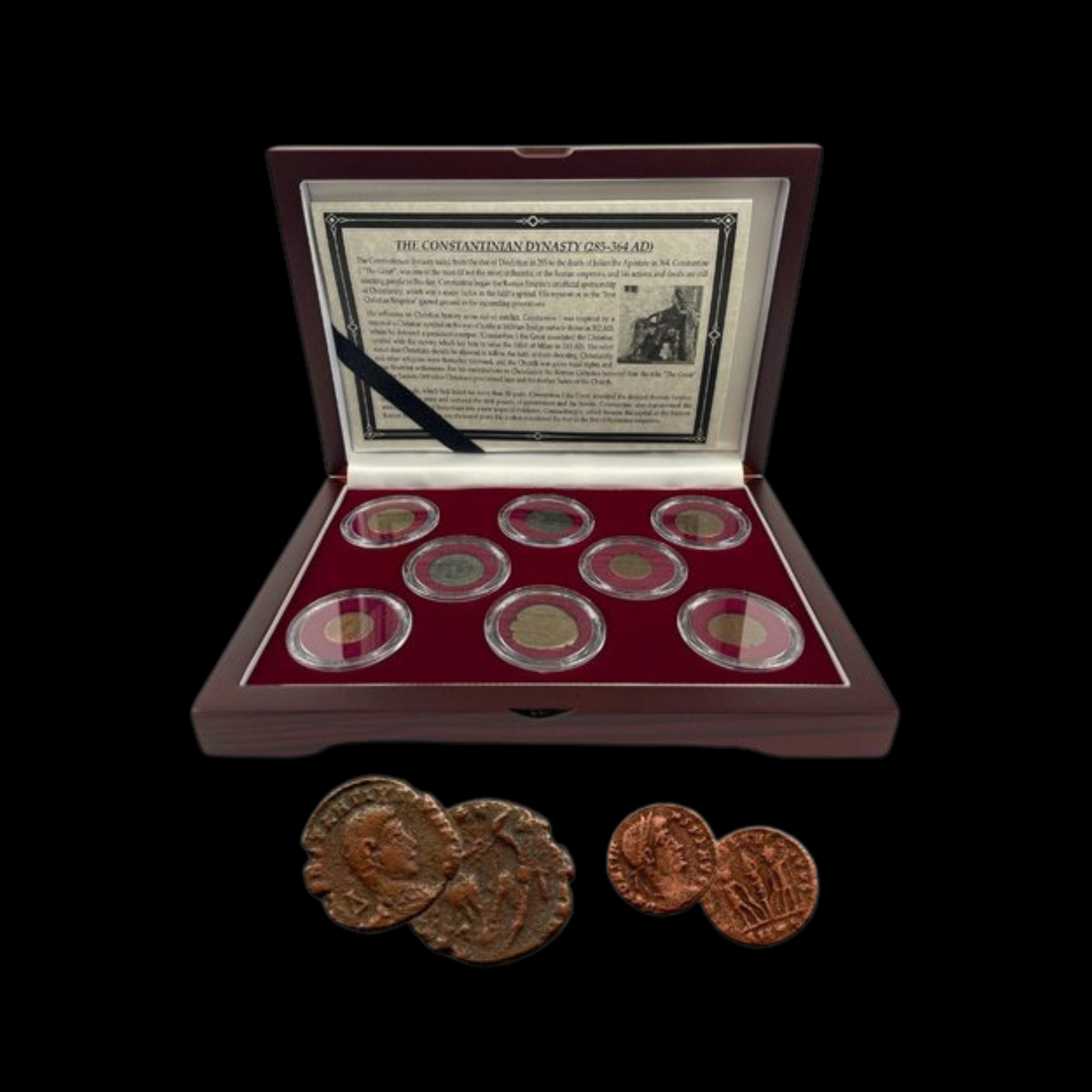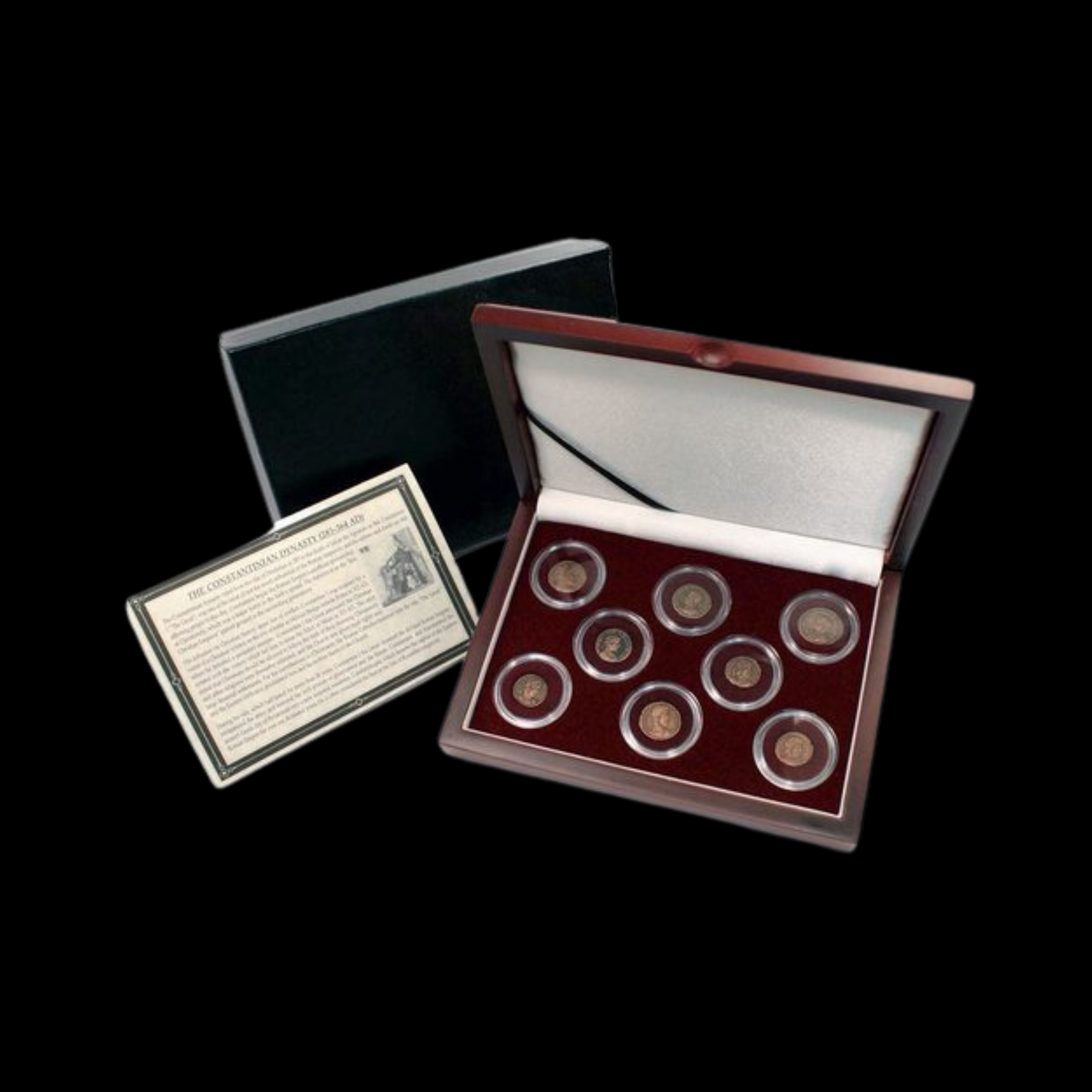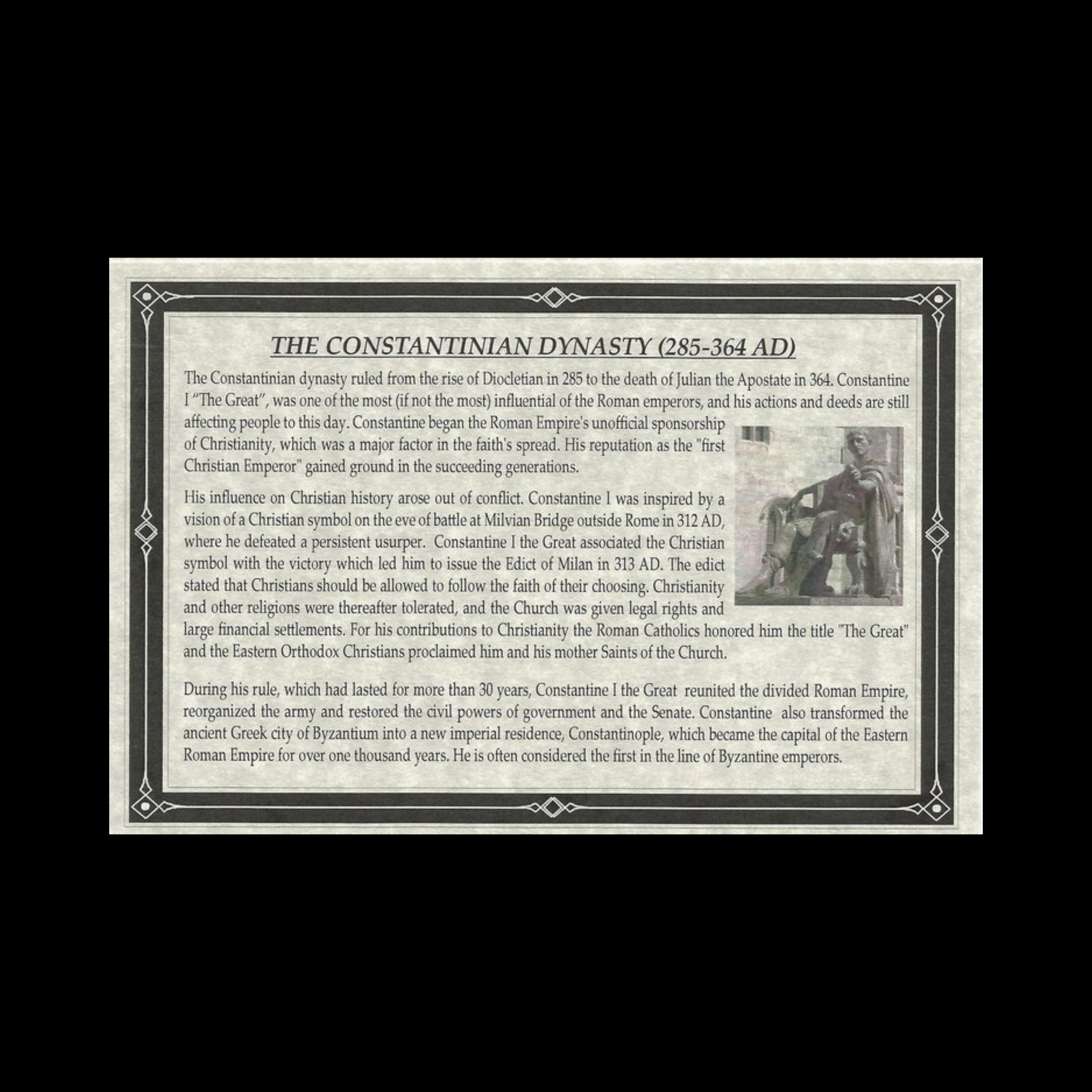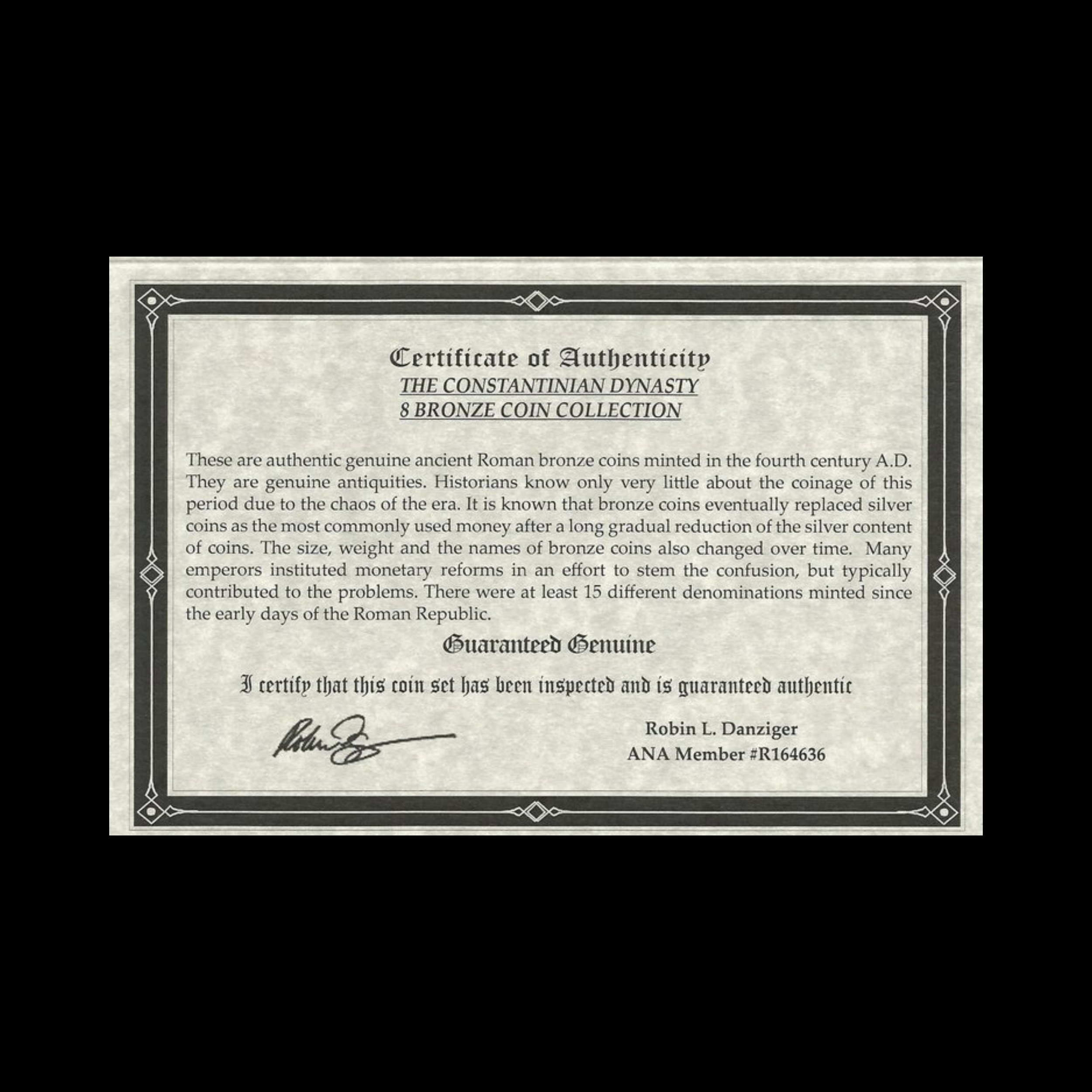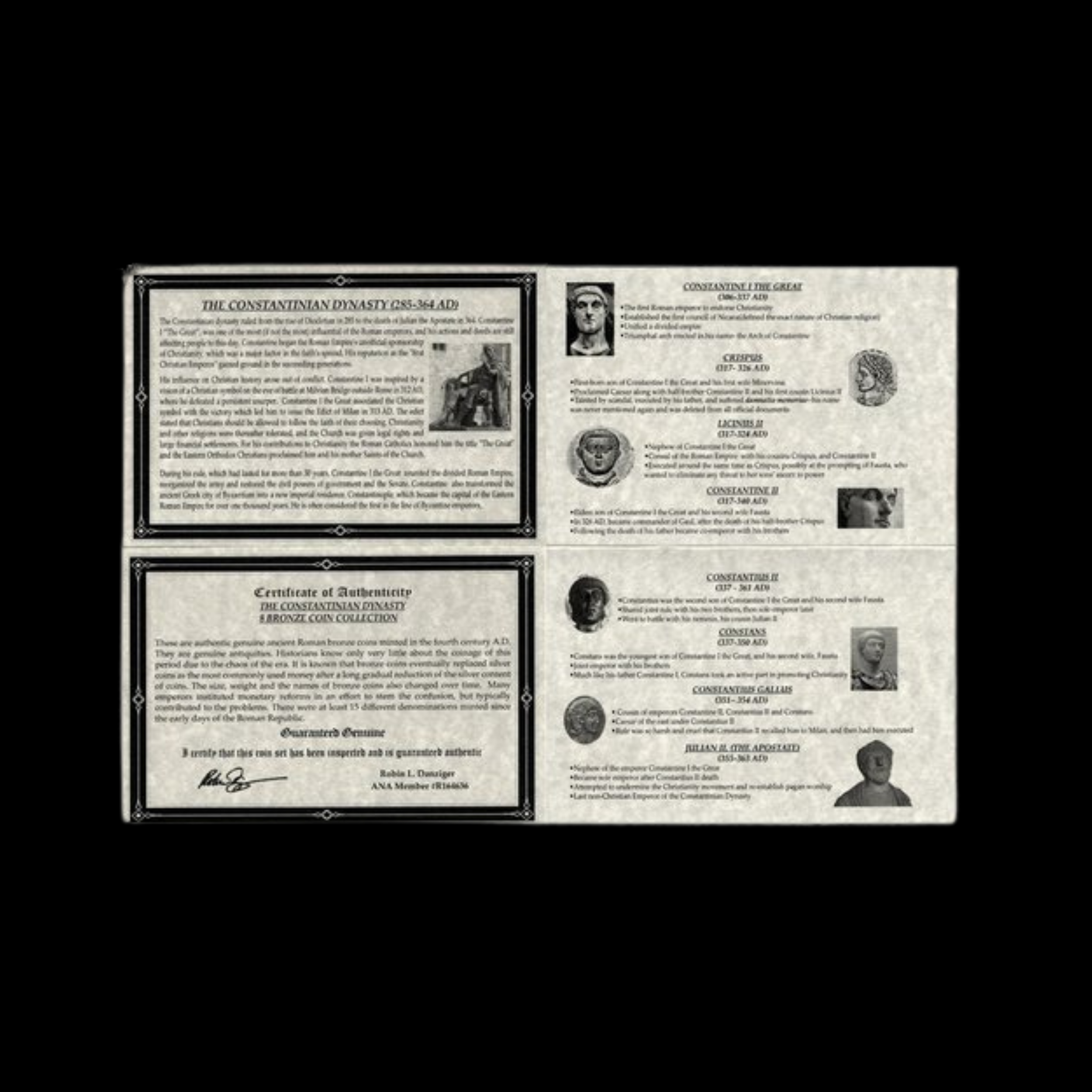 Image 1 of 9
Image 1 of 9

 Image 2 of 9
Image 2 of 9

 Image 3 of 9
Image 3 of 9

 Image 4 of 9
Image 4 of 9

 Image 5 of 9
Image 5 of 9

 Image 6 of 9
Image 6 of 9

 Image 7 of 9
Image 7 of 9

 Image 8 of 9
Image 8 of 9

 Image 9 of 9
Image 9 of 9










Roman Bronze Coin of Emperor Constantine II (about 1,685-1,710 years ago)
The coins shown are representative examples of the grade and type, but not the actual specimens for sale. For details on NGC’s grading standards and definitions, please refer to our NGC Grading page.
This small bronze coin was issued for Constantine II, the eldest son of Constantine the Great and heir to part of his father's vast empire. Born into imperial power and raised with expectations of rule, Constantine II's coins reflect the continued evolution of Roman currency during the Christian transformation of the empire, incorporating both traditional Roman and newer Christian symbolism.
Coin Description:
Front side: Portrait of Constantine II, usually facing right, wearing either a laurel wreath, rosette diadem, or military helmet, with Latin inscription giving his name and titles
Back side: May feature military standards, victory images, camp gates, soldiers, or early Christian symbols, accompanied by Latin legends and often mint marks
Technical Details:
Bronze composition
Denomination: AE3/4 (modern classification for small late Roman bronze coins)
NGC certified
Minted between 316-340 AD (first as Caesar under his father, then as Augustus)
Condition as certified by NGC
Historical Significance: Constantine II was literally "born in the purple," meaning he was born to a reigning emperor, and was groomed from early childhood for imperial rule. After Constantine the Great's death in 337 AD, the empire was divided among his three surviving sons, with Constantine II receiving the westernmost territories including Britain, Gaul (modern France), and Spain. Despite his privileged upbringing—or perhaps because of it—Constantine II proved an impatient ruler. Unsatisfied with his allocation of territories, he invaded the lands of his younger brother Constans in 340 AD. This power grab ended disastrously when he was ambushed and killed near Aquileia (in modern Italy), cutting short his independent reign after just three years and demonstrating the continuing instability of imperial succession despite Constantine the Great's efforts to establish a stable dynasty.
The coins shown are representative examples of the grade and type, but not the actual specimens for sale. For details on NGC’s grading standards and definitions, please refer to our NGC Grading page.
This small bronze coin was issued for Constantine II, the eldest son of Constantine the Great and heir to part of his father's vast empire. Born into imperial power and raised with expectations of rule, Constantine II's coins reflect the continued evolution of Roman currency during the Christian transformation of the empire, incorporating both traditional Roman and newer Christian symbolism.
Coin Description:
Front side: Portrait of Constantine II, usually facing right, wearing either a laurel wreath, rosette diadem, or military helmet, with Latin inscription giving his name and titles
Back side: May feature military standards, victory images, camp gates, soldiers, or early Christian symbols, accompanied by Latin legends and often mint marks
Technical Details:
Bronze composition
Denomination: AE3/4 (modern classification for small late Roman bronze coins)
NGC certified
Minted between 316-340 AD (first as Caesar under his father, then as Augustus)
Condition as certified by NGC
Historical Significance: Constantine II was literally "born in the purple," meaning he was born to a reigning emperor, and was groomed from early childhood for imperial rule. After Constantine the Great's death in 337 AD, the empire was divided among his three surviving sons, with Constantine II receiving the westernmost territories including Britain, Gaul (modern France), and Spain. Despite his privileged upbringing—or perhaps because of it—Constantine II proved an impatient ruler. Unsatisfied with his allocation of territories, he invaded the lands of his younger brother Constans in 340 AD. This power grab ended disastrously when he was ambushed and killed near Aquileia (in modern Italy), cutting short his independent reign after just three years and demonstrating the continuing instability of imperial succession despite Constantine the Great's efforts to establish a stable dynasty.






